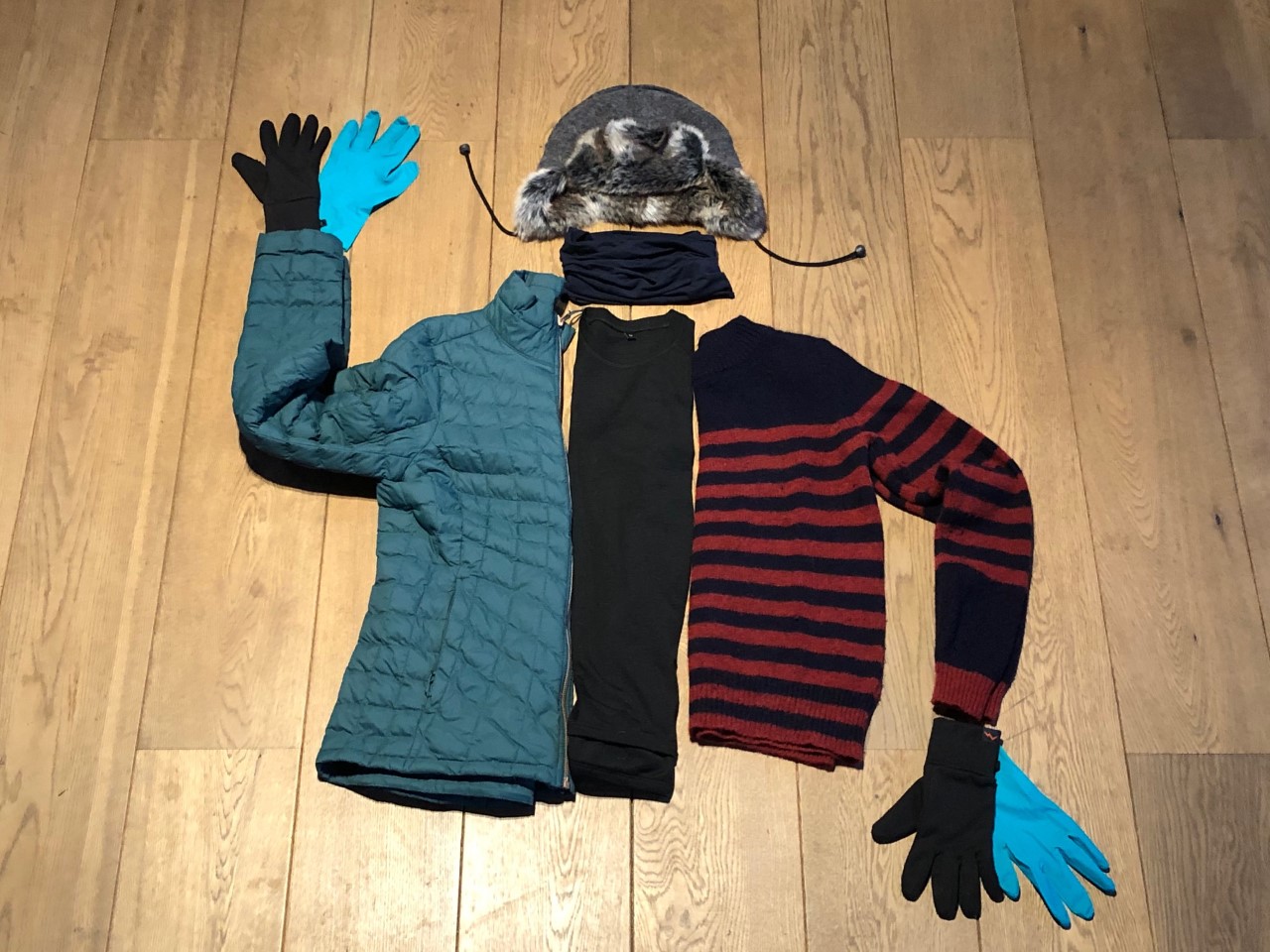Brrr - A Tad Nippy Out There...
On beautiful summer days at the Nursery customers often stop and stare taking in all the colours of the flowers and the view of the rolling Hampshire countryside beyond.
'What an amazing place to work, you must love being outside all the time?' Our response? 'Definitely, fantastic in this weather but you should be here in the middle of January when the wind is blowing. That's a different story.'
It can be pretty raw out there on the top of our hill in the wind but like many a creature, WE have learnt to adapt to our winter environment. As January opens we thought we would share some of our tips with you. Please feel free to send yours over too, we love to try something new.

1. For your upper body and pretty much everywhere else the answer is LAYERS, LAYERS, LAYERS
No surprise there, we hear you say, we are into layers too! So easy to pop on and off as necessary to stay comfortable. But whilst the benefit of wearing layers and trapping insulating air between them is well known, selecting the right materials for each layer is important.
Base layer - closest to the body. Choose natural fabrics as they allow your skin to breathe better but avoid cotton as once it is wet it stays wet and chills the body. Wool on the other hand keeps you warm even when wet. Others swear by their silk long johns - now there's an image.
Mid layer 'Personally nothing but a cosy wool jumper will do for me' says Rachel. 'I have been 'darning' the moth holes in my favourite work jumpers for years, they are like old friends and let's face it you are not going to see them under my jacket. Ribbed or cable jumpers offer even more room to trap air. Other colleagues prefer to wear flannel shirts, easily added under a jumper on a very cold day.'
Top layer(s) An insulated jacket, preferably wind and waterproof too. It's going to get muddy so no need to be precious. And your mother was right, getting one that will cover your bottom certainly cuts down on unwanted draughts.
Bottom half Avoid denim jeans like the plague unless you can fit a pair of woolen tights underneath, they are just not warm or windproof enough. Plus once wet, they stay wet for ages. Winter lined walking trousers are brilliant or old ski pants - a bit like wearing a romper suit, but they really work.
2. Your Head - Back to mum again, yes you need a hat.
Yes to stop heat loss from your head but also to cover your ears and prevent chills. At the nursery we all have our favourites from bobble hats to beanies and even Hilary's dashing deerstalker comes out each winter. Soooo warm.
3. Your Feet - Waterproof boots with deep ridged soles are a must
Plus ribbed woolen socks for warmth and to create an insulating layer of air close to the foot. If you are using uninsulated wellies, two or more pairs of socks will be needed. But for the extra special touch try out lambswool or sheepskin boot liners - good for keeping that draining ground chill at bay.
4. Your Hands - keep your hands warm and dry to prevent them from painfully cracking
A good dose of hand cream followed by fleece gloves and an outer waterproof latex glove does the trick, keeping you warm and allowing your fingers to move. For added warmth pop some reusable hand warmers into your gloves.
5. Your Face
After all your effort to keep your body warm, do not forget to protect your face too! Lip balm with a SPF 15+ will help to prevent uncomfortable chapping but it is important to moisturise often as well.
A last little tip from a Finnish Wilderness course - an oil-based moisturiser is far better than a water-based one in very cold or icy weather as the water crystals will freeze. Ouch!!!
6. Hot drinks
Keep a flask handy filled with a hot drink. It is remarkable how quickly it will warm you up.
Hope this helps to keep you warm in the garden this January. HAPPY GARDENING!!
